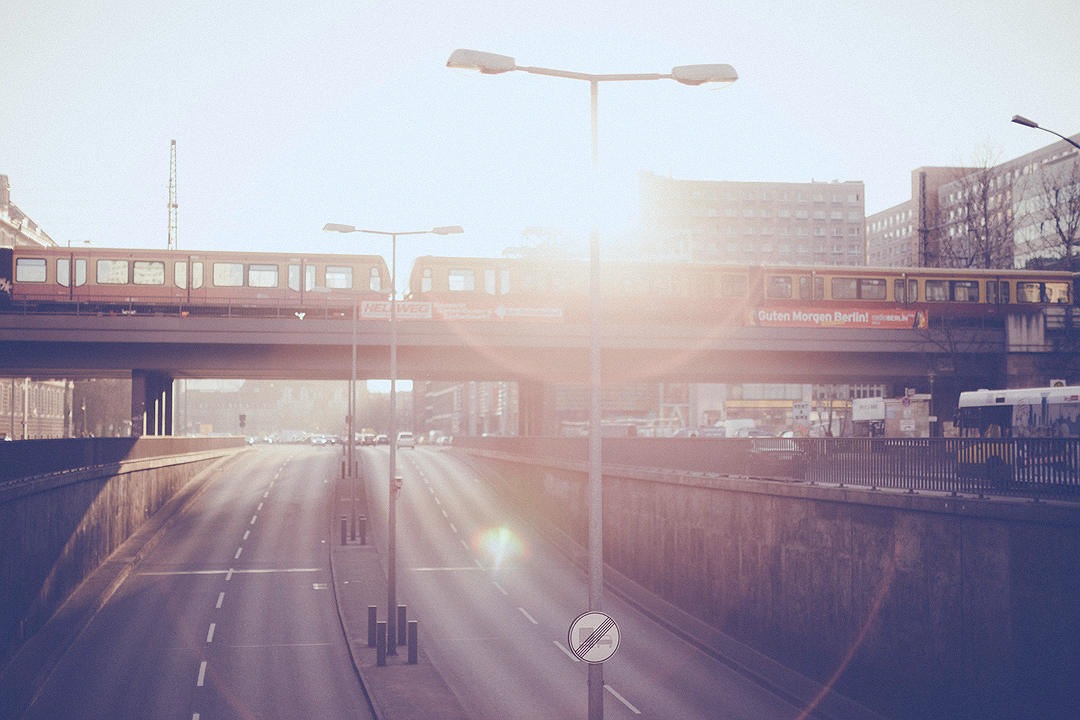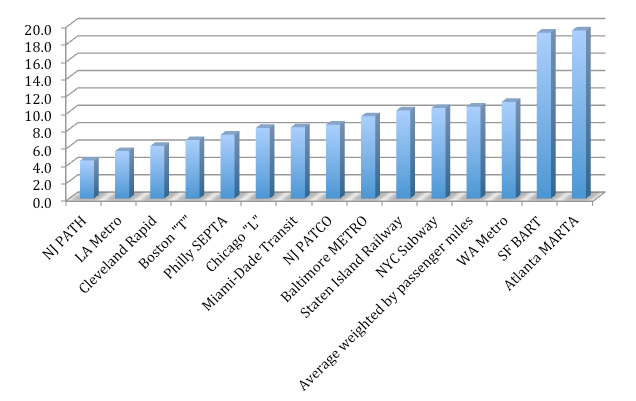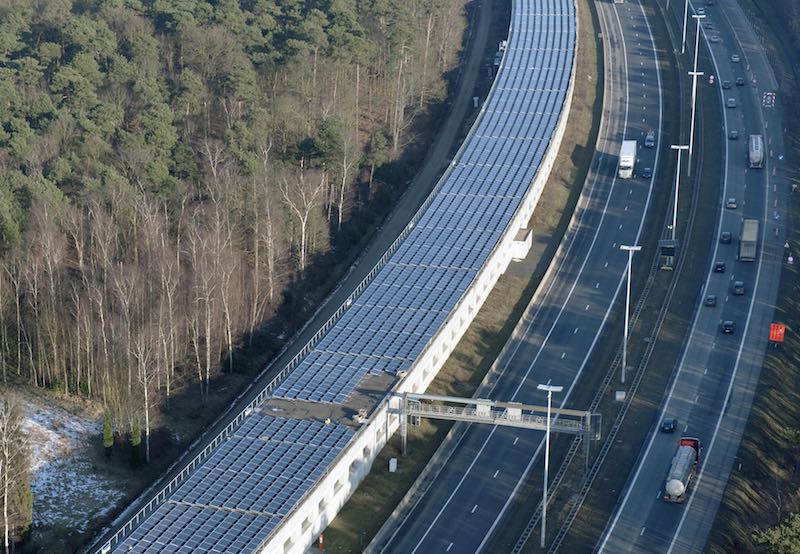Solar-Powered Trains: The Future of Sustainable Public Transportation?

It’s easy to forget that electric trains are a type of EV, and possible to power with clean energy like solar.
Here’s a futuristic idea, involving solar-powered trains.
California renewable energy policy expert Tam Hunt has founded a new start-up to solar power trains.
Solar Trains proposes constructing a solar canopy over miles of train track, enough to solar-power the nation’s electric train systems.
About ten cities in the US have electric train systems. These include BART in California, and the NY Subway system (most of the NYC Subway is actually above ground once it leaves Manhattan).
Electric rail is super sustainable already, but hardly a fast-evolving technology. Beginning as a visionary concept based on Jules Verne’s science fiction idea of a future in 1911, BART ultimately only began to be developed in 1946.
The idea is to put the solar panels on canopies above, rather than on the trains themselves, and the train would travel under the canopies.
"You can't get much juice from panels on trains, but you can with panels over them," Hunt told Understand Solar.

A solar canopy could supply about a megawatt per mile
"A good conservative estimate is one megawatt a mile,"he said. "But up to 5 megawatts a mile. The potential coverage varies widely based on the type of overhead lines and the type of train. The permitting issues will also vary widely based on location and environment."
Solar power could entirely replace fossil fuels for trains, and would catapult the already high-efficiency of trains. EVs now on the roads like Tesla’s Model S, the Chevy Volt, or the Nissan Leaf are 2.5 to 3 times more efficient than an equivalent horsepower in an ICE (Internal Combustion Engine) powered car.
Electric trains ramp up efficiency to an amazing level, at 2.5 times more efficient than an EV
"Electric trains are so efficient that a single 300-watt solar panel (about 4x6 feet) can provide up to 7,000 miles of an individual’s commuting miles per year, or 5 to 20 miles per day. The national average, based on National Transportation Database data on the efficiency of the various U.S. electric train systems, is about 4,000 miles per year for each 300-watt solar panel."
With 1 megawatt (million watts) of solar canopy installed along each mile of train tracks, electric trains would provide 2 million passenger-miles of train travel.
And a 3 megawatt-long solar canopy, which is perfectly doable, just wider, could supply 6 million passenger-miles of travel.
The potential of solar canopies to cut fossil energy use is enormous. The total US train system takes a staggering 45 GW of electricity. Depending on which state they are going through, a lot of dirty energy powers today’s trains.
Electric trains are an astoundingly efficient way to move large numbers of people, especially along much-travelled urban corridors like NY to Washington.
Hunt’s calculations indicate just how much more efficient electric trains are, compared even to EVs, the most efficient method of transport. As an example, Hunt compared solar powering electric trains to solar powering his small Fiat500e EV.
He could put one 300 watts solar panel on the roof of his small EV. But that would only power about 4.5 miles per day of driving. But put the same 300 watts panel on a solar canopy above a train track to power the train and it would supply 4,000 passenger-miles a year.
There is enough space in the existing rail infrastructure — on train stations and near train tracks — for enough solar panels to provide all of the electric train’s power demand.

Image credit: Tam Hunt
Solar as canopies above the trains could supply approximately half the power needed by the Bay Area-wide BART system
Hunt has calculated what is feasible for the existing BART system in the Bay Area.
In the case of BART the electric propulsion is supplied by a 1,000-volt DC connection in the third rail, and each rail car has a 150 HP motor above each axle, for four per car, for a total of 600 HP in each rail car.
"With fairly conservative assumptions about how much solar could be installed over or near existing BART above-ground tracks, we calculate that 51% of BART's total power needs could be met," he said.
He gave another example, of a smaller system in a region with a far lower insolation: in Illinois. Chicago’s electric train system, and one of the most used in the US, would be able to be 100% solar-powered, by his calculations.
The Metra Electric line, serving Chicago, is 31 miles long. Even if only 18 of its 31 miles were covered in solar, at 1 megawatt per mile, these panels could supply all of the Metra Electric’s power needs each year.
Resistance to High Speed Rail in the US
The Obama administration offered funding from the Recovery Act, as part of getting the economy moving again after the financial collapse of 2008 to many states to put in High Speed Rail (HSR), but most Republican governors turned it down.
California is one bright spot, with its plan for HSR linking the Bay Area to Southern California, entirely powered by electricity, at speeds up to 220 miles per hour, making the trip in 2 hours and 40 minutes. But even this is more than ten years away from completion.
Because these kinds of rail systems are so massive and take so much investment, there are fewer of them as the US has gradually devolved into a nation that can barely keep the infrastructure it already built-in operation, let alone agree to build massive new projects.
So it may seem like this idea may have missed its moment, at least in the US, from the point of view of the national psyche. The end of the 19th Century, with the massive NYC district steam heating, and the early 20th century with the Hoover Dam, were the heydays of massive visionary investment in the Public Good, that has dwindled since.
The original railroad system was developed to enable the coal industry to get its fuel across country to where it was needed to be burned every day. Hunt is not relying on just the US, however, with its long history of dirty energy support.
High speed trains, travelling at 155 miles per hour, linking major cities have actually been commonplace in many sustainability-conscious EU countries for some time, and Japan built the first so-called “bullet train” in the 1960s.

The solar canopy over the HSR built by the Belgian railway infrastructure manager Infrabel is pictured above.
The solar tunnel in Schoten and Brasschaat is a European first. On the roof of this rail tunnel in the high-speed line between Antwerp and the Dutch border, there are 16,000 photovoltaic panels. Every year, some 4000 trains (high-speed and domestic) can run on solar energy. That’s approximately one full day’s train traffic. The annual output of this energy project is about 3.6 GWh, which is on average the annual consumption of nearly a thousand families. The 16,000 solar panels in the Solar Tunnel project cut annual CO2 emissions by some 2,500 tons.
In the meantime, Hunt sees regular, non high-speed trains as “the low hanging fruit.”
"In the near-term, it makes more sense for light rail and commuter rail because there are fewer safety issues in building solar on or near low-speed train tracks."
Even for non-high speed trains, the global market is enormous, and growing – from the long-term climate safety point of view – right where it needs to be, in China and India.
India has about 40,000 miles of track and that’s growing.
Currently China has almost 70,000 miles of track, by far the most ambitious rail travel in the world.
China has more than doubled its electric train system within just the last decade.
With its new climate commitment and its series of Five Year Plans that lay out future goals and then put together the methods to making them happen, this expansion will keep going.
These are where Hunt sees the potential of a massive deployment of solar-powered electric train systems.
